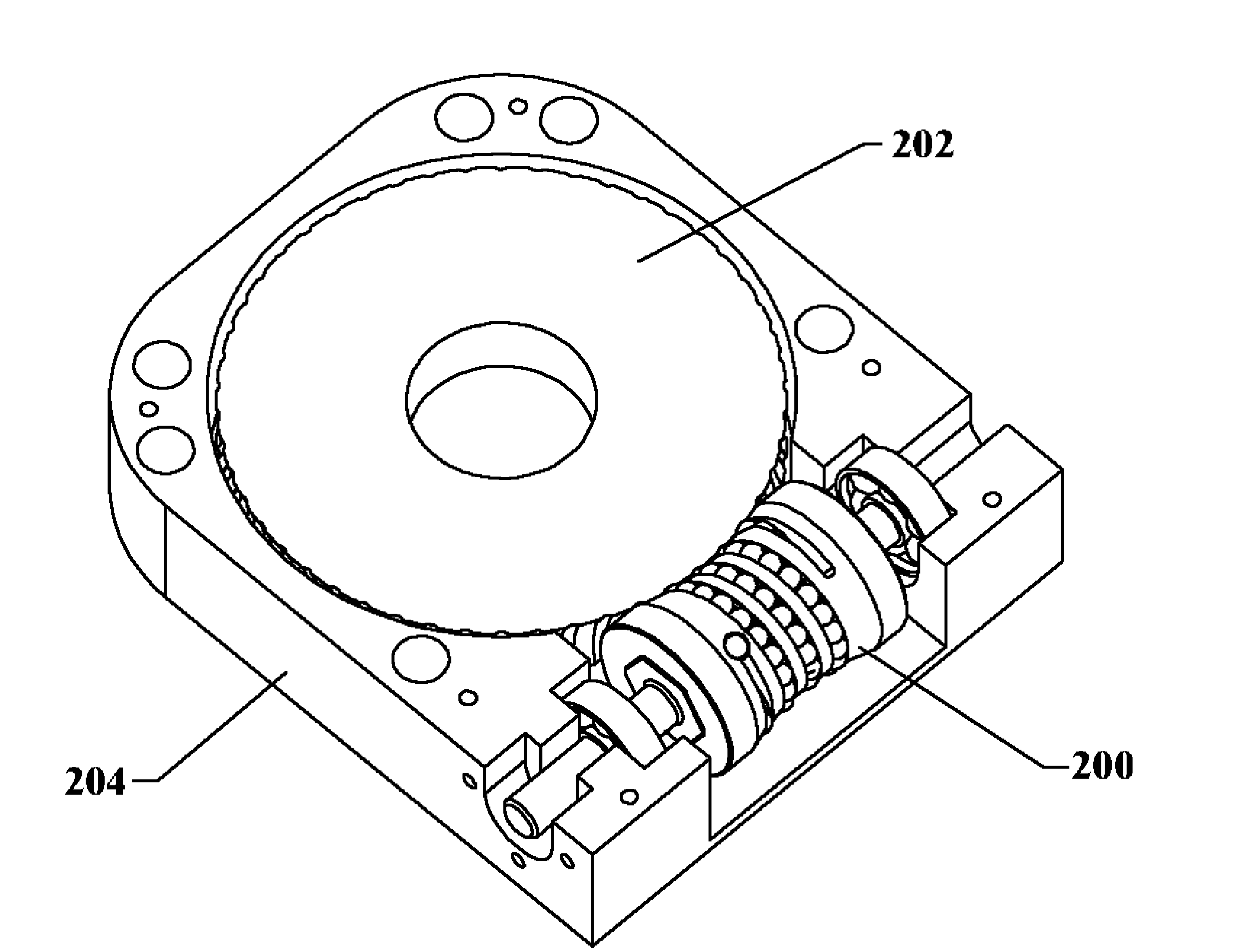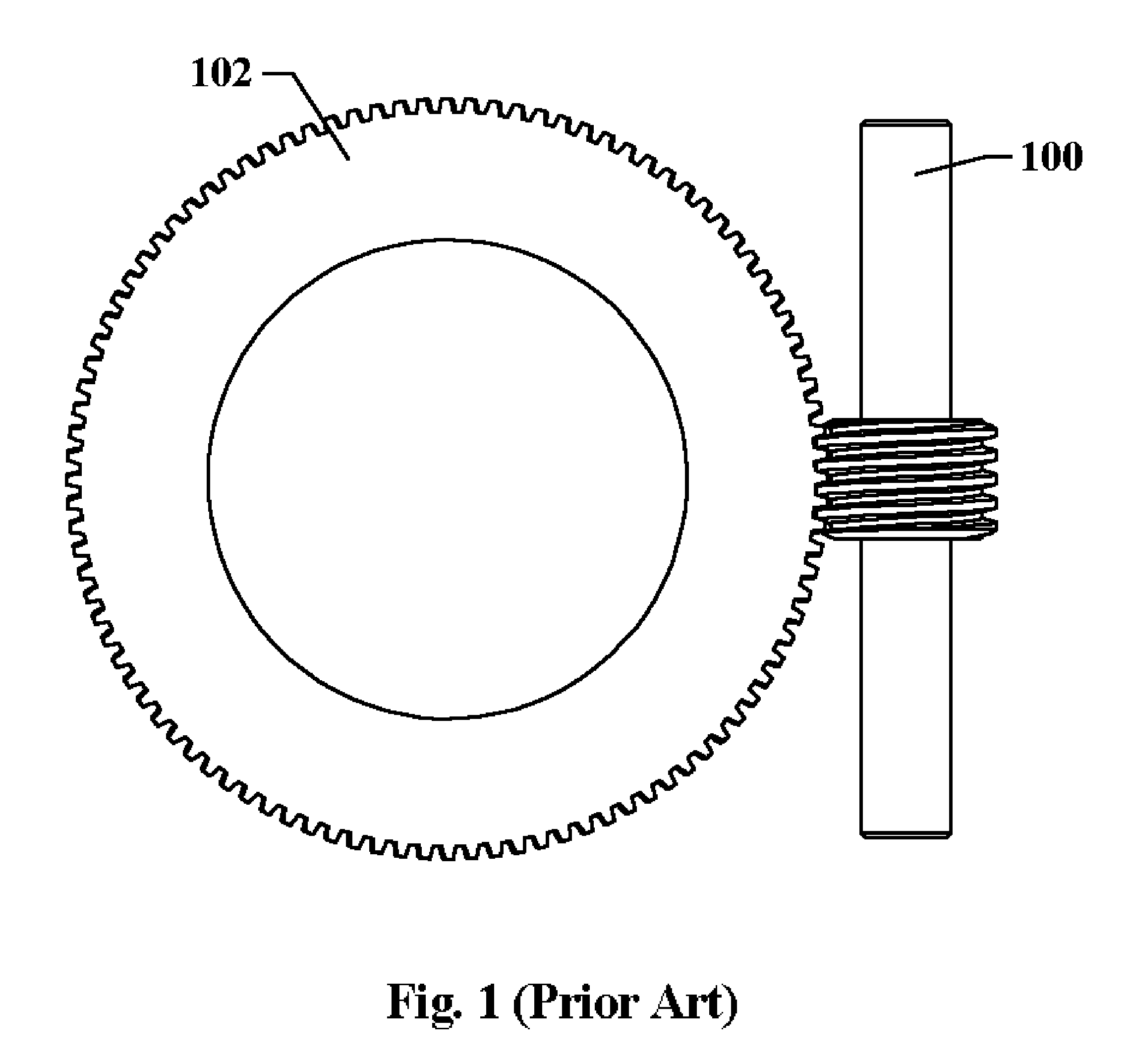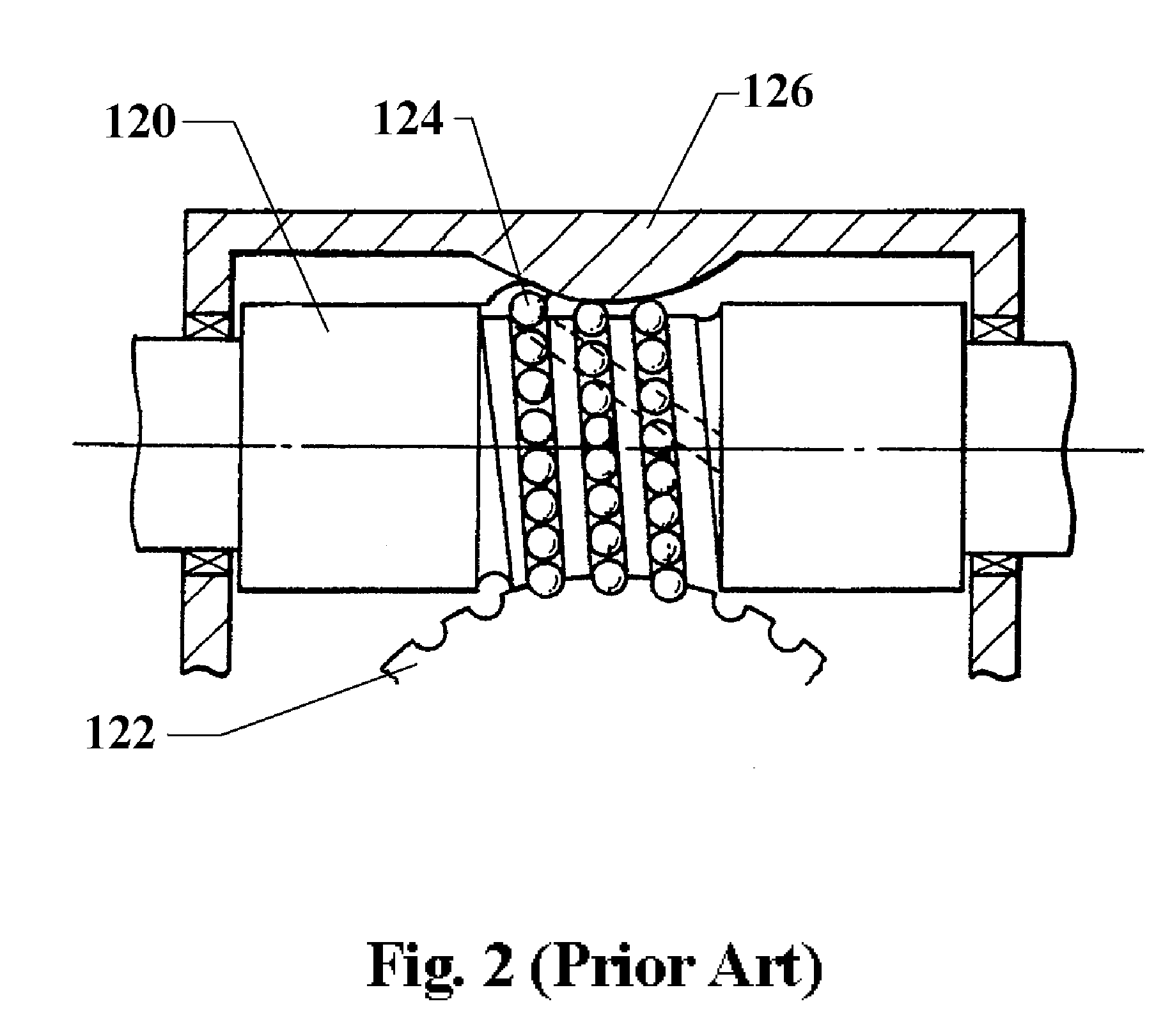Self-Retaining Recirculating Ball-Worm and Gear Device
a self-retaining, gear-based technology, applied in the direction of toothed gearings, belts/chains/gearrings, gearings, etc., can solve the problems of inefficient power conversion, especially problematic in such mechanisms, and the mechanism to suffer from premature wear
- Summary
- Abstract
- Description
- Claims
- Application Information
AI Technical Summary
Problems solved by technology
Method used
Image
Examples
Embodiment Construction
[0073]FIGS. 4A to 4C present several overall views of the self-retaining recirculating ball-worm and gear device. The device comprises a self-retaining ball-worm 200, gear 202, and housing 204. Housing 204 is designed to enclose and axially support the internal components of ball-worm 200 and gear 202. Bearings, bushings, or other support mechanisms may be included in housing 204 to axially support and restrict ball-worm 200 and gear 202 to their respective axes of rotation.
[0074]FIGS. 5A to 5C and FIG. 6 show several views of the device with housing 204 omitted. The axis of ball-worm 200 and axis of gear 202 are orthogonal but non-intersecting. The ball-worm comprises a worm shaft 220, worm collar 222, plug 226, and plurality of balls 224. The gear has a plurality of gear grooves 240 separated at periodic angular intervals which are designed to engage the balls 224 of the ball-worm. Worm shaft 220 and worm collar 222 are rigidly fastened together so that rotation of one causes the...
PUM
 Login to View More
Login to View More Abstract
Description
Claims
Application Information
 Login to View More
Login to View More - R&D
- Intellectual Property
- Life Sciences
- Materials
- Tech Scout
- Unparalleled Data Quality
- Higher Quality Content
- 60% Fewer Hallucinations
Browse by: Latest US Patents, China's latest patents, Technical Efficacy Thesaurus, Application Domain, Technology Topic, Popular Technical Reports.
© 2025 PatSnap. All rights reserved.Legal|Privacy policy|Modern Slavery Act Transparency Statement|Sitemap|About US| Contact US: help@patsnap.com



